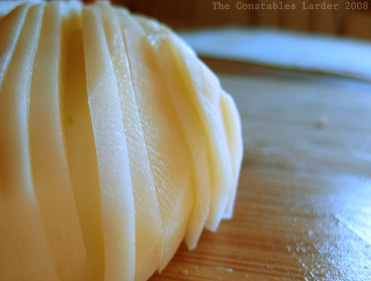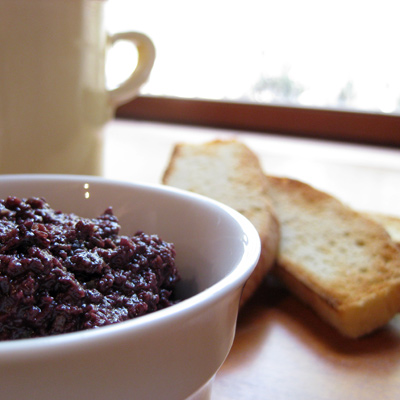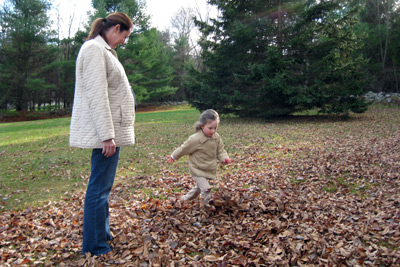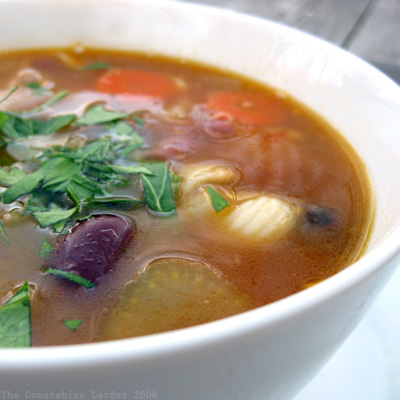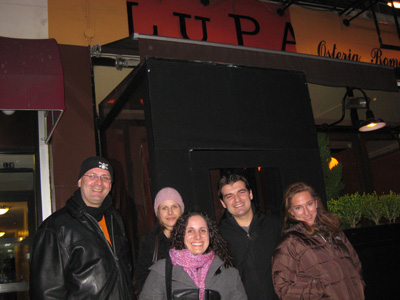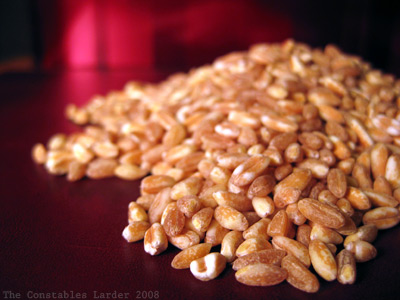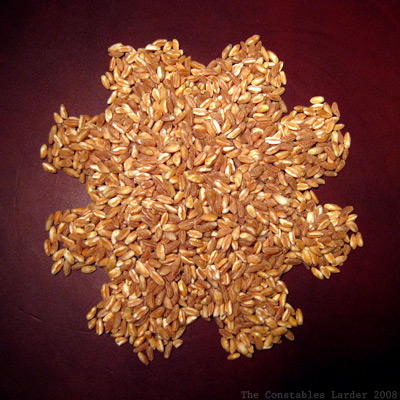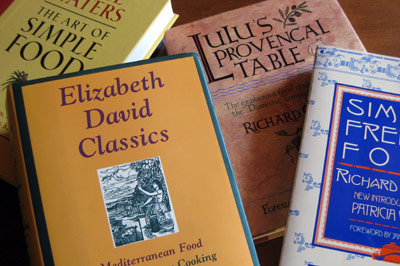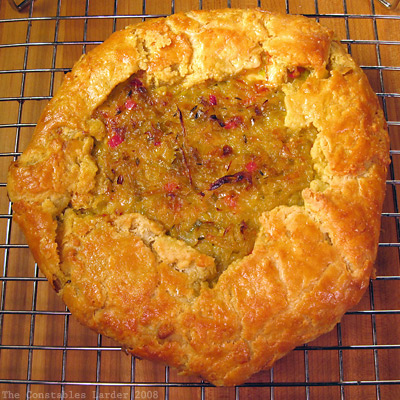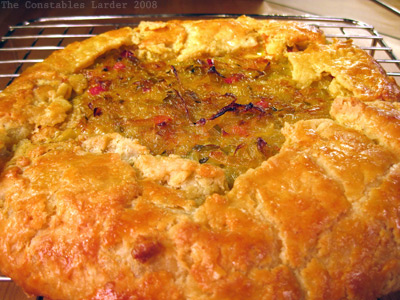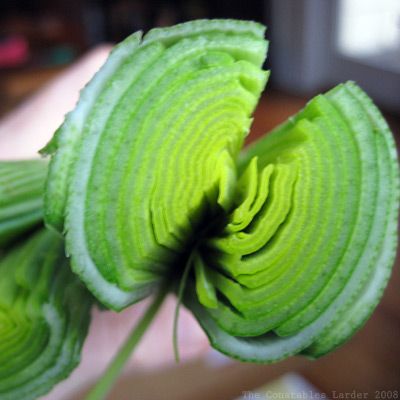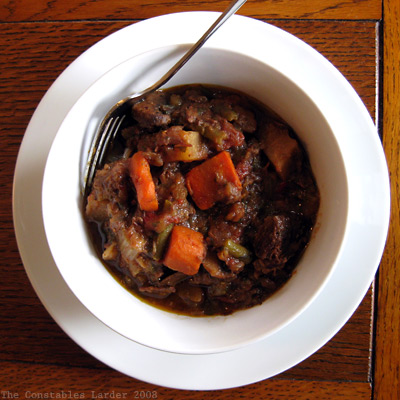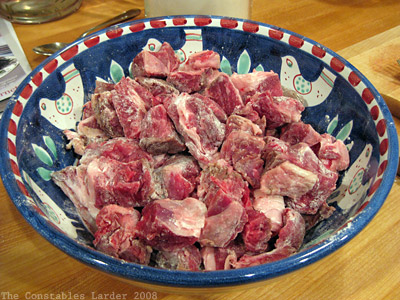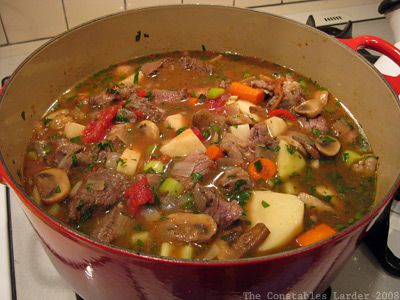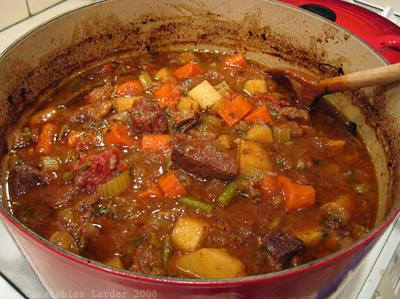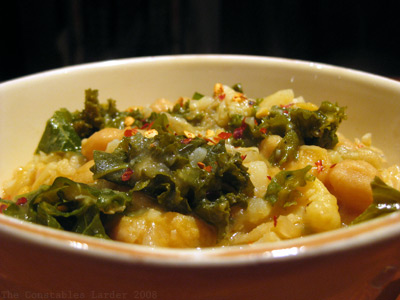While much of our Thanksgiving dinner was pretty traditional to our family, Lisl and I decided to change up the usual scalloped potato dish and add fennel to the gratin. Stacey, of Stacey Snacks, mentioned that Ina Garten had a great recipe, and I found a version on the Food Network website. I made a few changes, reducing amounts and layering rather than mixing in a bowl (I just love how attractive the layered approach looks when it comes out of the oven).
The results received universal approval from the adults at the table (munchkin, not so much, but the three-year-old palate is a frustrating thing to cook for). This was a convenient dish as well since I was able to bake it 90% done before the turkey took over the oven, and then just finish it off while the turkey rested.
Potato & Fennel Gratin, adapted from Ina Garten
4 to 6 medium-large idaho/russet potatos
1 large fennel bulb
1/2 large spanish or vidalia onion
1 tbsp butter
1 tbsp olive oil
2 cups gruyere cheese, thickly grated
1 3/4 cup heavy cream
salt and pepper
Thinly slice the onion. Remove the fronds and 1/4″ of the base of the fennel, cut in half, remove the core, and then thinly slice.
Preheat oven to 350F.
In a saute pan, heat the butter and olive oil on medium-low and cook the onions and fennel for about 15 minutes, stirring occasionally. While this is cooking, thinly slice (1/8″ or 2mm thick) the potatoes.
Butter the bottom and sides of a baking dish and place a first layer of potato, slightly overlapping each piece like fish scales. Sprinkle some gruyere cheese, a small amount of salt and pepper, and pour a little cream. Add a layer of half of your onion and fennel, and repeat with the cheese, salt, pepper, and cream. You will add another layer of potato, a layer of onion/fennel, and a final layer of potato, interspersing each one (including the top) with cheese, salt, pepper, and cream.
Place in the oven and bake for 1.5 hours until the top is nicely browned and the potatoes are very tender.
